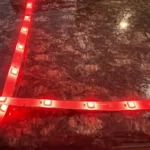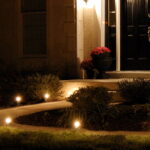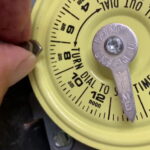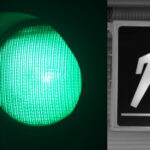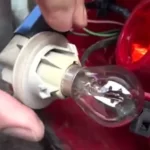How Tall Are Street Lights? Frequently Answered
Today’s street lights come in a wide variety, each with a distinctive height. how tall are street lights in average?
The ideal height for an average light pole is approximately 9 to 14 feet. This varies according to the size of the road and the amount of light the lamp emits. The most popular street light types, along with their unique technical characteristics and heights, are covered in this article.
For more information, continue reading.
Table of Contents
How Tall Are Street Lights?
Today, there are many streets all over the world that use street lights extensively. Following extensive testing, the first electric street light pole was used in Paris in 1878. The invention was so successful that it became well-known in many other nations.
Between 9 and 14 feet is the typical height of a street light pole.
The development of lamps coincided with technological advancement. Energy-efficient light-emitting diodes (LEDs) are the standard for lighting today. It’s worked out well that they did this. For those who work late, LED street lights improve security. They make navigation safer.
Varieties of Street Lights
Here are the main varieties of street lights available today:
High-Pressure Sodium Street Lights
Also known as HPS lamps or HPS lights, the high-pressure lamp is used in public outdoor places and industrial lighting. It has a simple design, with a compact arc with a combination of mercury, xenon, and sodium.
Additionally, it has an outer bulb that serves as a filter, protects the arc tube from temperature changes, and prevents the oxidation of the inner parts. HPS lamps last for 24,000 hours and produce a comparatively large amount of light. They may last longer if properly used.
They contain hazardous mercury, which is a minor drawback of the lamps. Because of this, it can be challenging to dispose of them after they have expired. Since the mercury won’t affect you if you handle them carefully, you can relax.
LED Street Lights
The best and most widely used lights today are LED street lights. LED lamps are safe and don’t contain mercury and have no filaments; thus, they last long! A LED light has a lifespan of roughly 100,000 hours. Where bulb replacement is difficult or expensive, they work best.
Light from LED lamps can be directed in any direction because they produce omnidirectional light. They also emit more light per watt than 80 lumens. Only 50 lumens are produced per watt by conventional streetlights. Its lack of UV (or ultraviolet) light, which attracts insects, is one of its additional benefits. They don’t also have to warm up. Once the switch is flipped on, they immediately start to emit light.
Metal Halide Street Lights
Here’s a fun option for every homeowner! Think bright when metal halide lamps come to mind. They are a variety of high-intensity discharge lamps. Light is created when an electrical arc passes through the gases inside. Special materials are used to make metal halide lamps. This will enable them to accomplish their goal successfully. Ceramic or quartz is used to create the lamp’s inner arc tube.
Glass made of borosilicate is used to make the outer bulb. This reduces the amount of UV light produced once it is turned on. The outer bulb of other lamps also has a phosphor coating. Compared to standard incandescent bulbs, these lamps have a lifespan of up to ten times longer. They claim to have a lifespan of 15,000–20,000 hours.
Consider using metal halide if you want to avoid using only white light all the time. Although they naturally emit much whiter light than other lights, they come in a staggering array of colors. These lights can also be used indoors because their operation is unaffected by the temperature of the environment.
Low-Pressure Street Lights
These kinds of lights produce a tiny amount of light, as their names would suggest. They can only be used outside due to this feature. Per watt, they produce approximately 183 lumens. They produce a definite monochromatic yellow color. In other words, when illuminated by these lamps, colors like blue and red appear gray.
Their fixtures range from U-tube to linear lamp. The lamp sizes range from 35 to 180 watts. As low as -40 degrees Fahrenheit triggers the start of their lighting. They then warm up to their full wattage after a few minutes.
Many low-pressure lights restart right away after, say, a blackout, in contrast to many other lights. The only drawback is that they need some time to get back to being bright as usual. There are many drawbacks to low-pressure lighting. They are expensive to install, to start. As a result of their monochromatic coloring, they also play havoc with your vision.
Narrow-Band Amber (NBA) LED Street Lights
NBA lights branch off from LED lights are very expensive and are still fairly new. For the low-pressure street lights, they are the ideal solution.
They do so because of their cool color representation. This indicates that they are easy on the eyes. They also perform better than white light producers. They step things up a notch by emitting primarily warm yellow or yellow color.
It’s nearly impossible to get one now that they’ve been available for a few months. Even now, some states advocate against widespread application of technology.

The Height of Street Light Poles in General
What is the typical height of a light pole? the street lamp’s (pole’s) height is often 6 meters, 8 meters, 10 meters, 12 meters, or 15 meters. The width of the road surface determines the specific use of the street light height. Typically, when only one sidelight is turned on, the height of the street light is equal to the width of the road. Alternately, the street light is less than one meter taller than the width of the road.
The following chart illustrates the relationship between the power of common LED street lamps and the pole height: 30-60W street lamps have a pole height of fewer than 6 meters, 60-100W street lamps have a pole height of fewer than 8 meters, and 100-150W street lamps have a pole height of fewer than 10 meters.
Height of street lantern (street light pole height) Traditional street lights have standard light pole heights of 4 meters, 4.5 meters, 5 meters, 5.5 meters, 6 meters, 6.5 meters, 7 meters, 7.5 meters, 8 meters, 8.5 meters, 9 meters, 9.5 meters, 10 meters, 10.5 meters, 11 meters, 11.5 meters, and 12 meters.
The garden light pole is typically 3 meters, 3.5 meters, or 4 meters tall.
High pole lights are typically 15 meters or taller.
The information above is only meant to be used as a guide because the actual situation determines the height of the street light.
Factors Affecting the Height of Street Light Poles
Numerous factors must be taken into account when determining the pole height, including the site requirements, traffic density, road width, and street light spacing.
- Before installing street lights, the location must be determined, for instance, rural roads, county-level roads, provincial-level roads, and so forth. Different installation heights exist. The width of the road is primarily responsible for this. A pole needs to be 5 meters high for a road that is 5 meters wide, while an 8 meter high pole is needed for a road that is 8 meters wide.
- The height of the lamp must be determined by both the type of passing vehicle and the density of vehicles on the road. For example, if you have a large car, you will need a high-end street light, whereas low-level street lights can be installed almost anywhere. Specify the height of the solar street lights in relation to the nearby trees. The assumption is that it must be adequately lit, and if the trees are small, the pole height may be greater than the trees’ height.
- The width of the road determines the specific function of the street light height. The light’s height must be no higher than one meter or equal to the width of the road surface if it is placed on one side. The following graph demonstrates the relationship between the power of typical LED street lamps and the pole height: 30-60W street lamps have a pole height of under 6 meters, 60-100W street lamps have a pole height of under 9 meters, and 100-150W street lamps have a pole height of under 12 meters. The distance is roughly 30 meters if the city’s main thoroughfare has four lights parallel to one another. Two traffic signals located roughly 35–40 meters apart divide the city’s secondary thoroughfares.
- The specific application of the street light height is also influenced by the distance between the lights. It is determined by a number of factors, including the brightness of the LED street light, the height of the lamp, and the width of the road. Additionally, towns may decide how many street lights to buy based on their budget before deciding how far apart to place them. Theoretically, LED street lamps should be placed 3.8–4 times the height of the poles apart, with a longitudinal spacing of 30–50 meters. The separation is between 40 and 50 meters when there are power poles or other poles nearby. To save money, think about combining the lighting pole with the power supply pole. To ensure consistent lighting, the distance should be kept short—typically between 30 and 40 meters—if an underground cable is used for power supply.
Additional Facts About Street Light Poles
The Pole’s Height
For there to be enough lighting, the street light pole needs to be set up at the correct height. Typically, street pole heights range from 9 to 14 feet. The street light pole would provide adequate illumination without producing excessive glare in a perfect world.
Consistent Light Intervals
While street lights help to deter crime, their main function is to light the way for vehicles, cyclists, and pedestrians. However, if one area has sufficient lighting while the other is completely dark, this can lead to accidents as the eyes adjust. Street lights must be spaced uniformly.
Context of Installation
You should pay close attention to the area near the street light post. For instance, the presence of saltwater in a coastal environment makes the poles susceptible to corrosion. Consequently, you might prefer poles with a particular finish.
Light Distribution
The presence of trees or tall buildings can create gloomy areas even when a road appears to be adequately lit. This defeats the purpose of installing the street lights. It is critical to keep these qualities in mind while determining the best location for street lighting.
Aesthetic Street Light Poles
These days, ornamental fluted lights and traffic poles are used to identify the majority of urban environments. Aesthetic features like sculptures, gardens, and fountains are frequently highlighted by ornamental lighting poles. This street lighting proposal has the power to visually enliven a typically uninteresting urban setting.
Maintenance of Street Lights
A conventional LED street light operates for around ten to twelve hours each day, and the streetlamp has a life expectancy of approximately 100,000 hours. In order to provide lighting that is more effective, streetlamps must be replaced frequently. Furthermore, the poles used must be strong enough to support the fixture.
FAQs
Who Maintains Street Lights?
Some towns and cities, through their departments of transportation, are responsible for maintaining and paying for their own streetlights. A lot of times, utilities are the ones who own the streetlights, and they charge the town or city a monthly fee that covers the street light, upkeep, and total energy consumption.
When Were Street Lights Invented?
In 1878, Paris became the first major city to use electric street lights. In the United States, more than 130,000 electric streetlights had been installed by 1890. The initial iterations of today’s street lights were short-lived and provided harsh lighting. Later, they were swapped out for incandescent street lights.
How Tall Are Traffic Lights?
You seem to be having a lively discussion. The standard height of traffic lights is 18 feet off the ground, despite the fact that there is no specific law dictating their height.
The actual traffic lights are much larger than you might anticipate, usually standing at a height of four feet! Normally, the lights inside of them are 12 inches, but on roads with very little traffic, an 8-inch light is used.
However, even if an accident at a light caused your premium to skyrocket, finding an affordable auto insurance policy is still possible thanks to Jerry. Traffic lights must be noticeable so that drivers can see them easily and obey their signals.
Jerry, the insurance comparison super app, finds you the top online quotes from more than 50 top-rated insurance companies in less than a minute; all you have to do is pick one. Users of Jerry save $887 annually on insurance on average!




![9 Best Boat Dock Lighting Ideas In 2022 [Updated]](https://www.totallylight.com/wp-content/uploads/2022/09/9-Best-Boat-Dock-Lighting-Ideas-In-2022-Updated-150x150.jpg)


